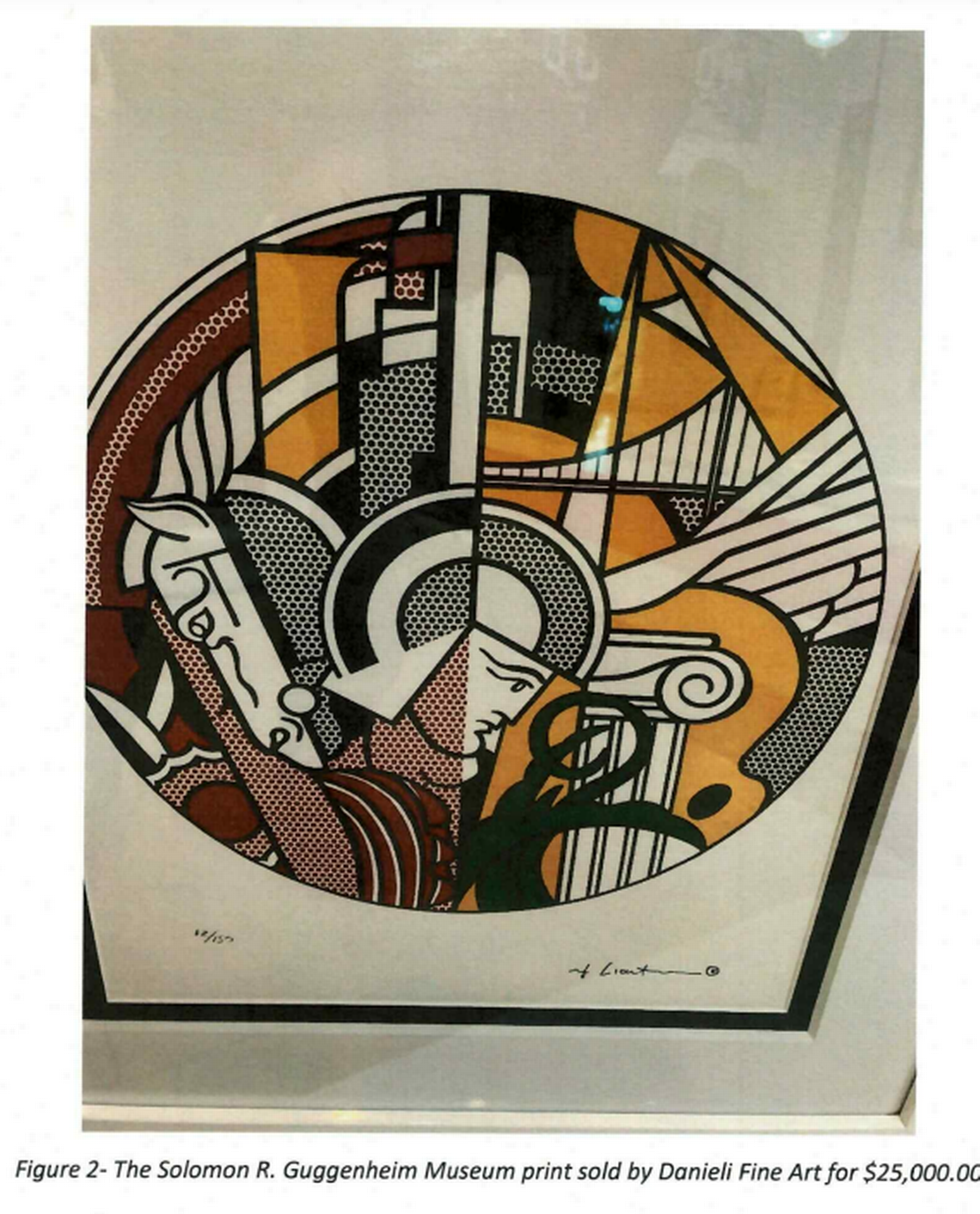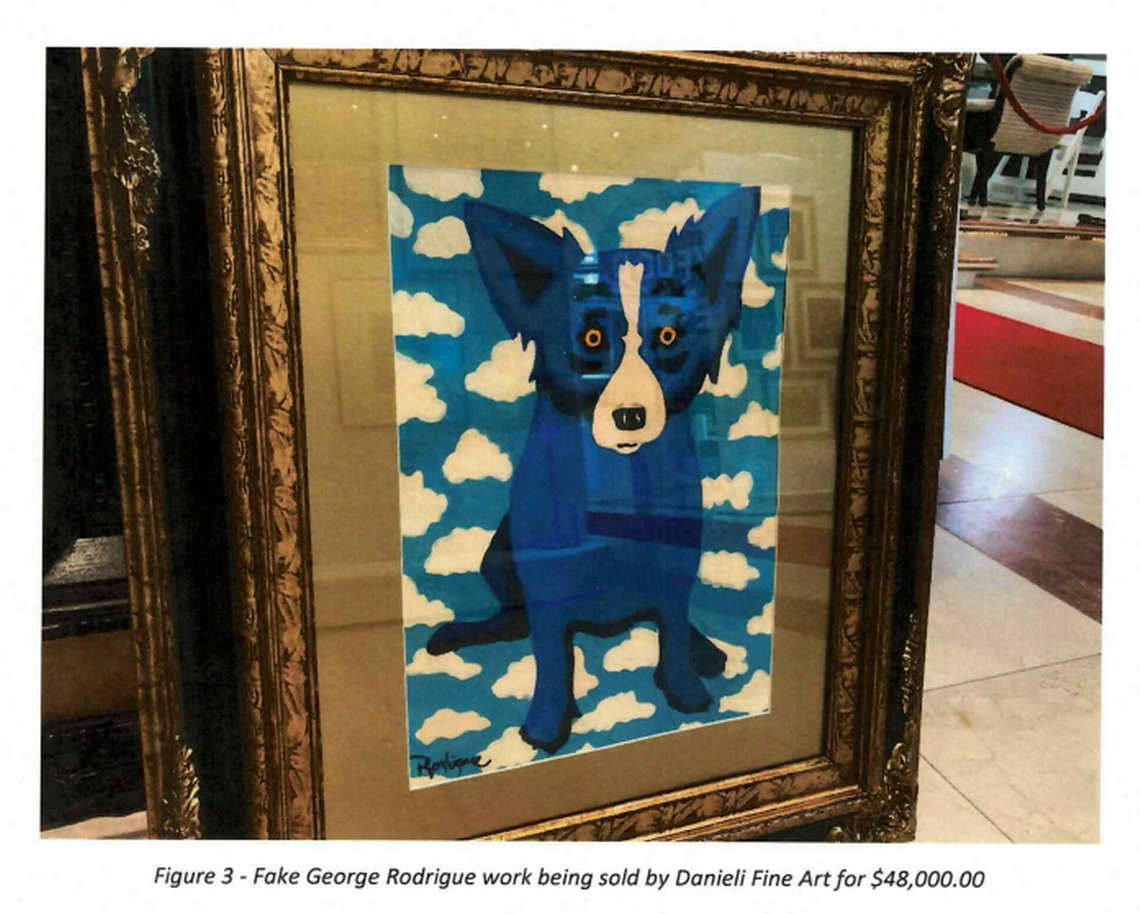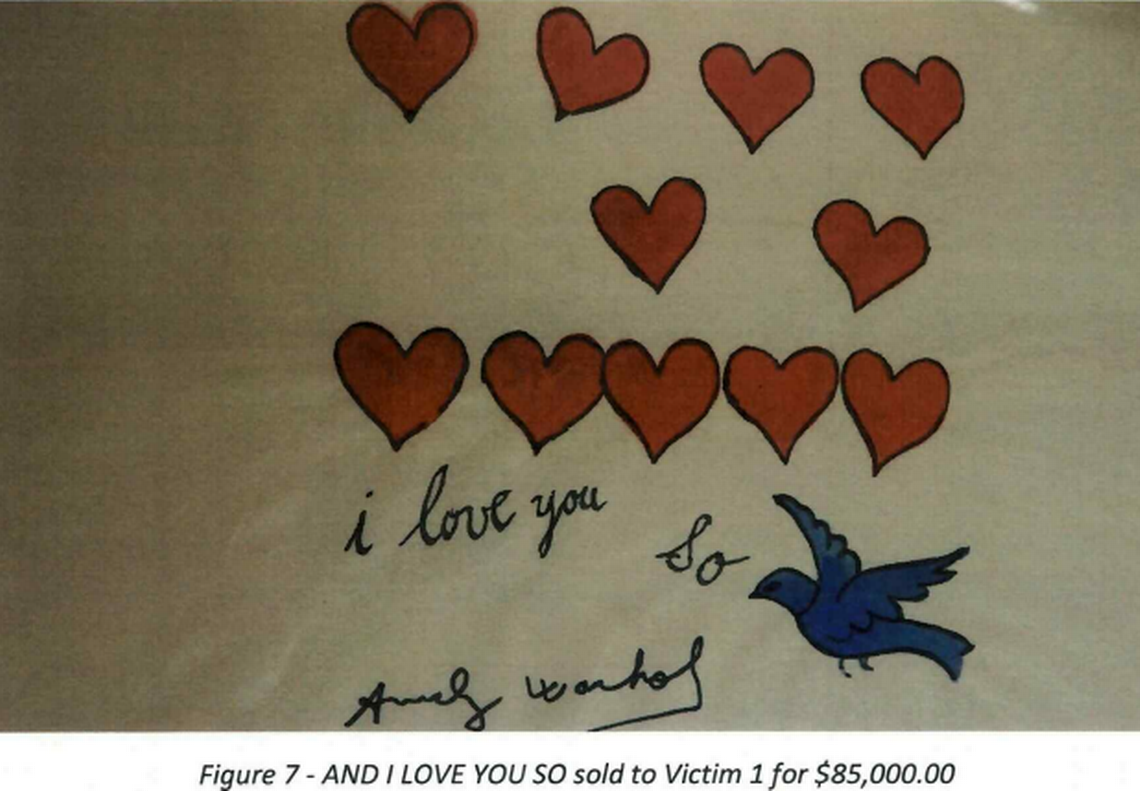‘1,000% fake’ Basquiats? South Florida gallerist indicted for alleged art fraud
Daniel Elie Bouaziz was a big shot art dealer and official appraiser who specialized in high-end artworks. His Galerie Danieli and Danieli Fine Art in Palm Beach sold original, authentic, limited-edition, signed works by iconic artists: Banksy, Andy Warhol, Jean-Michel Basquiat, Roy Lichtenstein and Keith Haring.
He told his wealthy clients that the pieces were “top notch” investments. He sourced his finest works from a mysterious “German billionaire.”
But the FBI alleges that Bouaziz was actually selling a fantasy of fakes.
On Wednesday, Bouaziz, 68, pleaded not guilty to an indictment charging him with mail fraud, wire fraud and money laundering as part of a lucrative scheme selling inexpensive copies as high-end, original artworks. The FBI Art Crime team accused Bouaziz of purchasing reproductions of artworks on auction websites, marking up the price and selling the works to his unsuspecting gallery clients.
Court records show that the federal government is planning to seize several assets — including three Rolls Royces, a 70-foot boat and 10 real estate properties in South Florida — that prosecutors claim Bouaziz bought with his tainted profits from the artwork sales. In one instance, Bouaziz sold a fake Lichtenstein nude print for $70,000 and used that money to buy a Cartier watch, according to the FBI.
The government can only take his assets if prosecutors obtain a conviction of Bouaziz.
The duct-taped banana from Art Basel Miami Beach went viral. Now there’s a lawsuit over it
A defense attorney for Bouaziz, who was released on a $500,000 bond after his arrest in May, says his client has a longstanding reputation as a reputable art dealer. Lawyer Howard Schumacher referred the Herald to a statement he gave the New York Post.
“This intrusion by the government has had an impact on his reputation and he wants to clear that,” Schumacher told the Post.
The West Palm Beach case isn’t the only alleged art fraud scandal in Florida. Last month, the director of the Orlando Museum of Art lost his job over an exhibition the museum held featuring Basquiat works that may not be authentic. The FBI raided the museum days earlier, plucking the disputed artworks from the walls.
An FBI criminal complaint filed in Bouaziz’s case details interviews with six people who purchased hundreds of thousands of dollars worth of artworks and found out that they had been swindled with fakes. The document also mentions three witnesses who noticed that something was amiss on Worth Avenue, an exclusive part of Palm Beach where Bouaziz’s galleries were located.
One witness told the FBI that there were several forged Haring artworks on the walls of one of Bouaziz’s galleries in October 2021. The witness, who said the works were obviously fake, estimated that Bouaziz would only need to sell a couple phony pieces a month to cover his expenses, according to an affidavit filed with the criminal complaint.
A second witness spoke to the FBI about fake Banksy works at Danieli Fine Art. The prices Bouaziz offered didn’t seem right to the witness since legitimate Banksy works would be worth millions of dollars. The witness added that there was a signed Basquiat work that was “1,000% fake,” the affidavit says.
A third witness visited Danieli Fine Art in March 2021 and viewed over 30 pieces of art, none of which appeared to be real, the document said. This witness said they knew of an art collector who purchased a Warhol piece called “Superman” that had a fake stamp on the back.
That “art collector” may have actually been an undercover agent.
‘You cannot lose money here’
Last September, an FBI agent with a hidden camera and microphone walked into Galerie Danieli and recorded conversations with Bouaziz, according to the affidavit.
The undercover agent and Bouaziz discussed several artworks at the gallery, including an original “Superman” by Warhol and a rare screenprint of Lichtenstein’s “The Solomon R. Guggenheim Museum.” Bouaziz insisted that the artworks were not just legitimate, but great investments, according to the document.
“You cannot lose money here,” Bouaziz added, pointing to the Lichtenstein print.
The agent asked about the Warhol signature on the “Superman” piece.

“This is very rare... He made um, he made um, he made like a hundred of ‘Superman,’ a hundred of them,” Bouaziz said, according to the affidavit. On the back of the piece was a stamp that read “CMOA,” which stands for the Carnegie Museum of Art in Warhol’s hometown of Pittsburgh.
Bouaziz also offered to sell the agent a painting of a blue dog by George Rodrigue for $48,000.
The agent settled on the Warhol piece and purchased it from Bouaziz for $25,000, the affidavit says. But before the gallery shipped out the Warhol piece, the agent called and asked to switch it for the Lichtenstein print. The gallery obliged.
The FBI agents found hints of potential forgery in the artworks, the affidavit says.
The CMOA stamp on the Warhol piece was particularly suspicious. An FBI agent contacted the Andy Warhol Museum in Pittsburgh and spoke to a representative who said that they weren’t aware of any partnership with the Carnegie Museum to print a “Superman” series. A representative from the Carnegie Museum said it never published “Superman” prints and that the museum did not own a “CMOA” stamp.
An FBI agent contacted the Rodrigue Studio, the exclusive gallery for Rodrigue’s work, and showed a curator the signature on the painting. “Definitely fake,” the curator said. An invoice from an online live auction website said that Bouaziz bought the painting for $140.

The Lichtenstein print was no better, the affidavit says. A Bouaziz gallery employee told the undercover agent that Bouaziz got the print from Hans Shemke, a “German billionaire that lived in Peru.” (Latin American news outlets have reported on a man named Hans-Wolfgang Schemke who has his own history with alleged fake paintings.) But records show that Bouaziz didn’t buy anything from Shemke. He paid 450 euros for the print from a Spanish company.
The FBI examined the fake Lichtenstein print when it arrived in the mail. The signature was faked and made to look like it was signed with a pencil, the FBI alleges.
In December, the undercover agent returned to Bouaziz’s gallery for a bigger purchase. This time the agent bought a collection of works purported to be by Basquiat, Banksy, Haring and Georgia O’Keeffe. The total was $22,000,000.
The Banksy work was sold for $140,000. Bouaziz actually bought it from Black River Auction, which was allegedly established by a man who was incarcerated for selling counterfeit goods, for $518.40, according to the FBI affidavit.
Bouaziz had discussed the Basquiat work with the undercover agent back in September. He claimed to have gotten the work from Shemke who bought it from the Basquiat family. Bouaziz and the agent agreed on the price: $12,000,000.
The FBI provided images of the artwork to a member of the authentication committee of the late artist’s estate. Another fake, the Basquiat expert said. According to the affidavit, Bouaziz bought the Basquiat work for $495.
“Too good to be true”
Bouaziz’s alleged scheme came to an abrupt end December 15, 2021, when the FBI executed search warrants at his galleries. Agents found documents and invoices from customers who had apparently paid thousands for phony artworks since 2020, according to the affidavit filed by federal prosecutor Sarah Schall.
One person paid Bouaziz a $200,000 down payment before purchasing several works, one of which was a Warhol “Superman” print, the affidavit says. (It is unclear if this was the same “Superman” with the fake stamp offered to the undercover agent.) The customer ended up spending $860,000 on fake artworks.
When the alleged victim learned about the investigation, they contacted Bouaziz asking for their down payment back. He returned $100,000, the document said. Other clients have received some repayment from Bouaziz as well.
Another person bought a “holy grail” of four artworks for $290,000. A group of contacts in New York told the customer that the works “looked off.” The price was too good to be true, the group said. According to the FBI, they were right.
One individual and their significant other told the FBI that they purchased two original Warhol pieces, “AND I LOVE YOU SO” and “Converse sneakers in conversation” for $125,000 in total. The customer later hired a fine art claims adjuster who said neither were original.

In fact, the real original “AND I LOVE YOU SO” piece was no where near South Florida. It’s at the Warhol Museum in Pittsburgh. The version of the piece the customer purchased was a copy that was licensed for a children’s book. The second artwork, the affidavit says, isn’t even based on any known Warhol piece.
Bouaziz had purchased the “AND I LOVE YOU SO” copy for $100, the document said. He sold it to the customer for $85,000.
The alleged victim was new to art collecting.
This story was produced with financial support from The Pérez Family Foundation, in partnership with Journalism Funding Partners, as part of an independent journalism fellowship program. The Miami Herald maintains full editorial control of this work.
